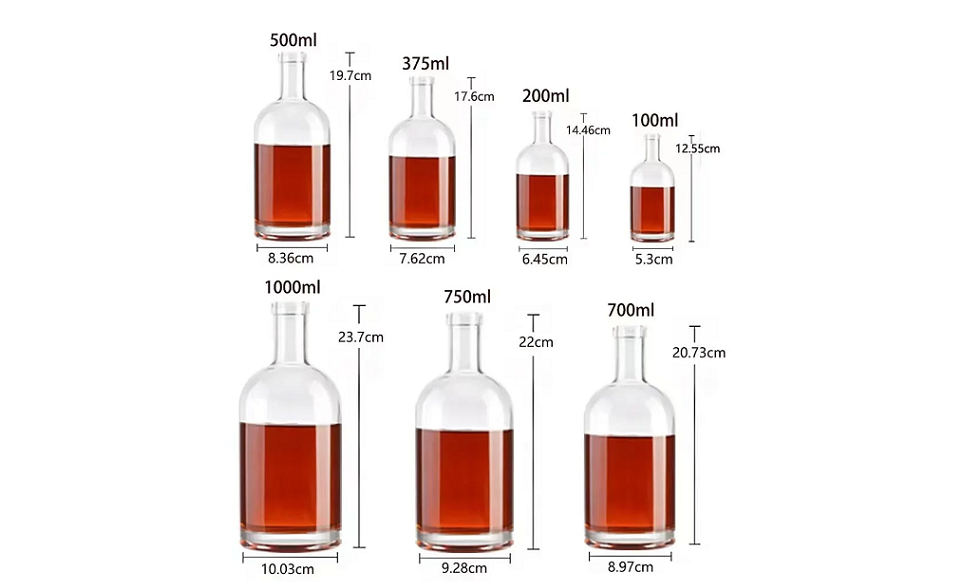When designing best spirit bottles, the first consideration is liquor bottle sizes. There are different sizes of liquor bottles, what capacity alcohol sizes bottles, whiskey bottle sizes is essential from the beginning developping stage. This blog lists alcohol sizes, liquor sizes and whiskey bottle sizes.
Whiskey bottle sizes
Whiskey is one of the world’s popular liquor and spirits. For whiskey bottling, it is important to source proper whiskey bottles sizes to expand your incredible whiskey branding market. As whiskey bottle factory, MC glass bottle manufacturer in China design custom glass bottles for liquor and spirits in shapes, sizes, colors and decorations to reflect the whiskey brands.
There are a veriety of alcohol bottle sizes for whiskey bottling ranging from miniature bottles to large liquor bottles sizes. In this article, we will list the most popular whiskey bottle sizes for different liquor marketing.
50 ml, also known as a “nip” or “miniature”, is the small whiskey bottles, perfect for gifts and sampling.
200 ml bottle for whiskey, has other names like a “half pint” or “hip flask”
375 ml is also known as a “pint” or “half bottle”
500 ml is a “pint” or “half liter”
750 ml is standard bottles size for liquor and wine
1 liter alcohol bottle is a “quart”
1.75 liters, also known as a “handle” or “half gallon”
Miniature whiskey bottle
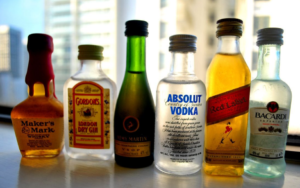
Miniature whiskey bottles are small size liquor bottles holding 50ml of spirits. The small liquor bottles are designed as sampling and popular for new spirits launching.
Size and volume
Miniature whiskey bottles measure about 2-3 inches in height and holding 50 ml of whiskey. The small volume makes Miniature bottles ideal for single serving or sampling.
Sampling and tasting
Miniature whiskey bottles are widely used for sampling and tasting purposes. They allow consumers to try different whiskey brands, flavors, which is particularly perfect for new liquor launching.
Gifting and souvenirs
Miniature whiskey bottles are popular for wedding favors, corporate gifts, or as a token of appreciation during special occasions.
Travel friendly
Thanks to the small sizing, Miniature whiskey bottles are ideal for travelers who want to enjoy their favourite whiskey while on the move.
Limited editions
Whiskey brands may release special limited editions with Miniature bottles to generate excitement among collectors and consumers.
Various whiskey types
Miniature whiskey bottles suits for Scotch, Bourbon, Irish whisky allowing consumers to explore diverse flavors.
Prices
Miniature bottles are generally more affordable than full-sized bottles, making them an accessible option for trying premium whiskeys without a significant financial commitment.
Aesthetic appealing
It is easy to find that Miniature bottles are designed with new and interesting labeling, making them attractive on shelves.
Half pint whiskey bottles vs. hip flask
Half pint whiskey bottles refer to a liquor bottle of 200ml, which is half the volume of a standard pint. In some regions, people would like to call the 200 ml bottle hip flask. However, hip flasks are usually made of metal, often stainless steel, and have a flat, rounded shape that fit against the hip or thigh. Nevertheless, both the half pint bottle and the hip flask serve the purpose of proviing a portable and smaller quantity of whiskey for personal use.
Size and volume
Half pint whiskey bottles hold 200 ml liquid, which is larger than Miniature bottles but smaller than a standard pint bottle.
Portability
Similar to miniature whiskey bottles, half pint bottles are convenient and portable to be carried in pockets, purses or bags, making them popular for on-the-go enjoyment.
Usage
Half pint whiskey bottles are also small liquor bottles sizes, which are typically enjoyed in a single sitting, a gift or souvenir for whiskey enthusiasts.
Legal restrictions
There may be legal restrictions on the volume of alcohol sizes which request licensed premises. Please make sure that half pint whiskey bottles are legal in your regions.
Whiskey bottle volumes
Whiskey bottles come in various volumes to cater to different preferences, occasions, and market demands. Each whiskey bottle volume serves different purposes, from convenient sampling and travel sizes to larger options for enthusiasts and collectors. The choice of bottle size often depends on individual preferences, occasion, and the intended use of the whiskey. Here are some common whiskey bottle volumes you may come across:
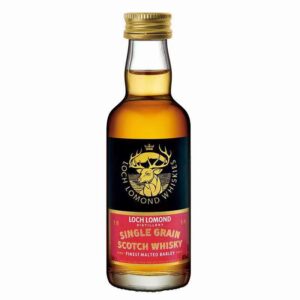
Miniature (50 ml)
Miniature is also know as “Minis” or “nips”, typically used for sampling, gifting and as collectibles.
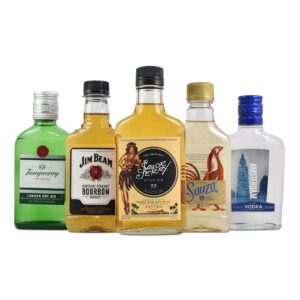
Half Pint (200 ml)
The half pint whiskey bottle holds 200 milliliters of whiskey, which is half the volume of a standard pint. It is convenient for individual servings and travel-friendly.
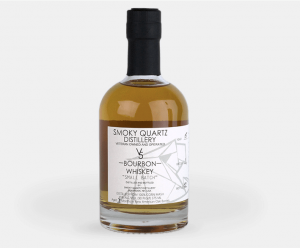
Pint (375 ml)
The pint sized whiskey bottle holds 375 milliliters of whiskey, which is half the volume of a standard 750 ml bottle. It offers a more affordable option for trying new whiskeys.
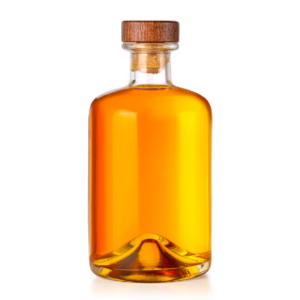
Half Liter (500 ml)
The half-liter whiskey bottle holds 500 milliliters of whiskey. 500ml whiskey bottles are popular in some countries like UK while it is nor legal in the USA market.
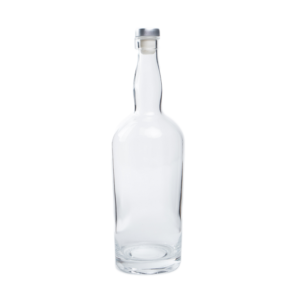
Standard (750 ml)
The standard whiskey bottle size holds 750 milliliters of whiskey. It is the most common bottle size found on store shelves and is considered the standard for many brands.
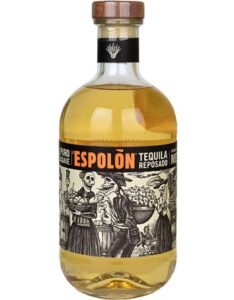
Quart (1 liter)
The quart sized whiskey bottle holds 1 liter (1000 milliliters) of whiskey. It provides a larger quantity for whiskey enthusiasts and is commonly used for premium or limited-edition releases.
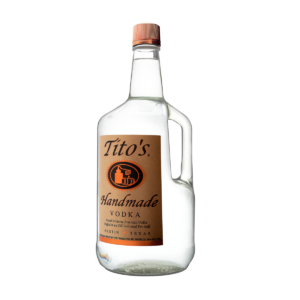
Handle (1.75 liters)
The handle sized whiskey bottle holds 1.75 liters (1750 milliliters) of whiskey. It is also known as a “half gallon” and is popular for bulk purchases and cost savings.
Larger Sizes
Occasionally, you may encounter even larger whiskey bottle sizes, such as 3 liters, 4.5 liters, or even larger, especially for special promotions or limited-edition releases.
What is a shot
Shots are commonly used units of measurement for whiskey and other alcoholic beverages.When ordering whiskey at a bar or consuming it at home, it’s common to refer to the number of shots or ounces desired, and the bartender or server will pour the appropriate amount accordingly.
Shot
A shot is a specific measure of alcohol, typically equal to 1.5 fluid ounces (approximately 44 milliliters) in the United States. This standardized measure allows for consistent servings of alcoholic beverages, including whiskey. When someone orders or refers to “a shot of whiskey,” they are requesting the standard 1.5 fluid ounces of the spirit.
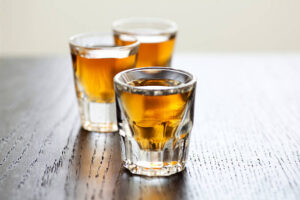
Shot glass
A shot glass is a small glass with a thick bottom, specifically designed to hold a single shot of alcohol.They come in various designs and materials, but their common feature is the small size and thick bottom.
So, when people say “shots,” they might be referring to either the standard measure of alcohol (1.5 fluid ounces) or the small glass in which the shot is served. For example, someone might ask for “two shots of whiskey” meaning they want two servings, each poured into separate shot glasses.
What is Ounce
An ounce is a unit of volume measurement used to quantify liquids, and in the context of whiskey, it refers to a fluid ounce. One fluid ounce (fl oz) is equal to approximately 29.6 milliliters. A standard shot of whiskey in the United States is, therefore, approximately 1.5 fluid ounces, which is equal to about 44 milliliters.
It’s worth noting that the term “shot” is often used informally to refer to any small amount of whiskey or other alcoholic drinks, even if it’s not exactly 1.5 fluid ounces. Bartenders may pour “double shots” or “half shots” depending on the customer’s preference or the establishment’s serving policy. However, a standard shot size is generally considered to be around 1.5 fluid ounces.
In some countries, the metric system is used, and whiskey servings may be measured in milliliters. In such cases, a standard shot is typically around 44 milliliters (ml).
History of whiskey development and whiskey bottling
The history of whisky and its bottling is rich and fascinating, which can be traced back to almost 7000 years ago, when nomadic tribes in the Middle East discovered that the fermentation of grains into alcohol could be used both for food preservation and as an additive to their daily diets.
Today, more than 700 varieties of whiskey are produced globally, with some of the most famous being Scotch whiskey, Japanese whiskey, Irish whiskey, American whiskey and Canadian whiskey. Here’s an overview of some key points in the history of whisky and whisky bottling:
Origins of Whisky
The exact origins of whisky are somewhat disputed, but it is believed to have been first produced in ancient Mesopotamia around 2,000 BCE. The process of distillation was further refined and spread by the Moors in the Iberian Peninsula during the Middle Ages.
Development in Scotland and Ireland
Scotland and Ireland are two countries with a long tradition of whisky production. In Scotland, whisky was being produced as early as the late 15th century.In Ireland, whisky production also has a long history, with Irish whiskey gaining international recognition by the 19th century.
Early Bottling
Originally, whisky was sold in bulk or dispensed directly from barrels at local taverns or shops. Bottling whisky became more common, which allowed producers to reach a wider market.
Standardization and regulation
As whisky production expanded, the need for standardization and quality control arose. In the mid 19th century, legislation was introduced in both Scotland and Ireland to regulate the production of whisky, including rules about aging, ingredients, and distillation processes.
Bottling revolution
The late 19th and early 20th centuries saw significant advancements in bottling technology. The introduction of glass bottles with cork stoppers became the standard, allowing whisky to be stored and shipped more efficiently.
Prohibition
In the United States, Prohibition (1920-1933) prohibited the sale, production, and transportation of alcoholic beverages, including whisky. This led to a rise in illegal whisky production and distribution, and it also fueled the popularity of Canadian and Scotch whiskies abroad.
The rise of blended whisky
In the 19th century, blenders started mixing different types of whisky together, creating a blended whisky. The blended whisky became more and more popular due to its enjoyable flavors and economic costs.
Modern whiskey bottling
Today, whisky bottling is a sophisticated process involving various bottle sizes to cater to different markets. From miniature bottles to larger size, whisky is available in a wide range of packaging options.
Sustainable packaging
In recent years, there has been a growing emphasis on sustainable packaging in the whisky industry, with efforts to reduce waste and use eco-friendly materials.
Conclusion
To make your whiskey business successful, selecting the perfect whiskey bottle sizes is essential. Whiskey bottles come in various sizes to cater to different preferences. Understanding the different requirements for whiskey bottles, sourcing premium glass liquor bottles wholesale prices, contact whiskey bottle factory now

